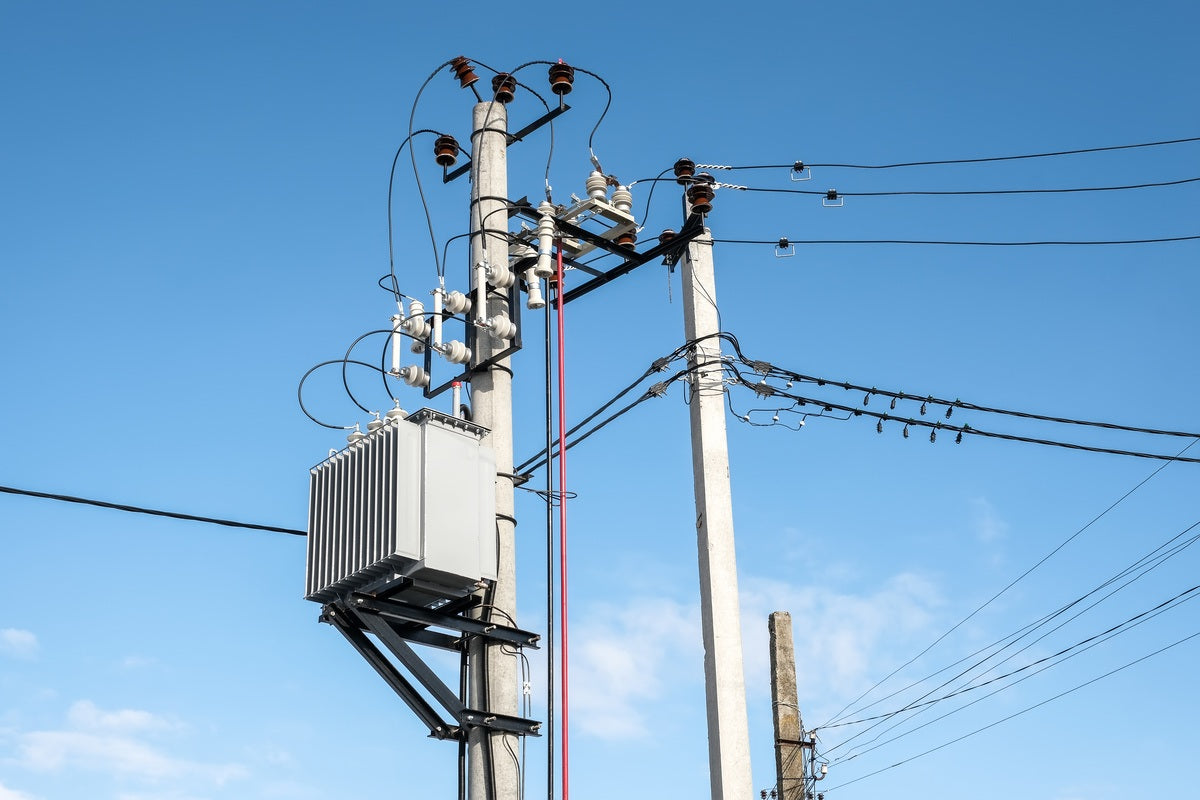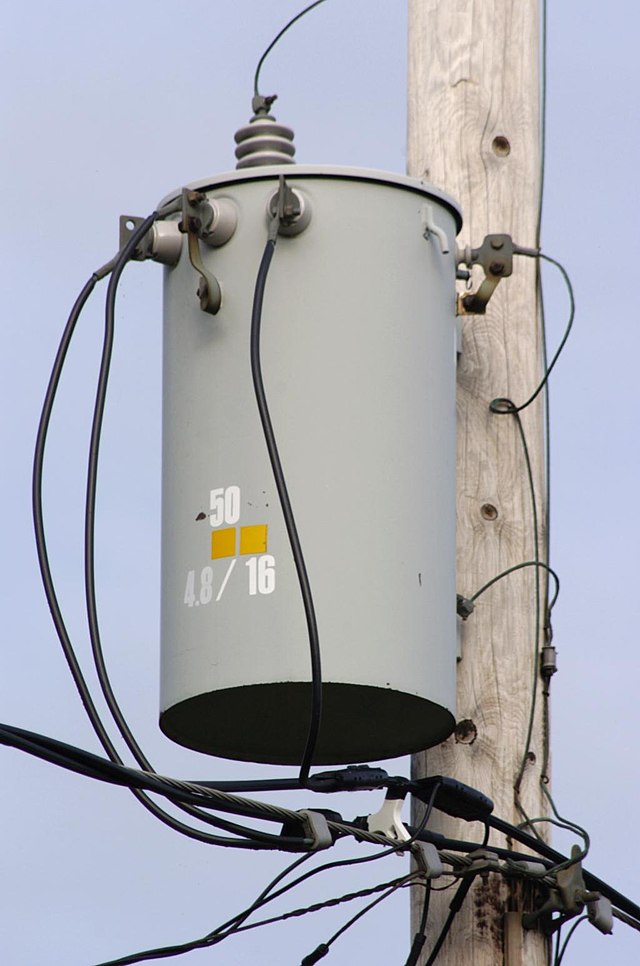A transformer on a power pole converts high voltage electricity to lower voltage for safe home or business use. It ensures efficient power distribution.
Transformers mounted on power poles are essential for modern electrical infrastructure. They step down high voltage electricity from power lines to a safer, usable level. This conversion is crucial for delivering electricity to homes and businesses efficiently. Positioned high above ground, these transformers are less susceptible to damage and tampering.
Regular maintenance ensures they operate reliably, minimizing power outages. Their elevated placement also saves valuable ground space and enhances safety. Understanding their role helps appreciate the complexity behind everyday electricity use. Proper functioning of these transformers is vital for consistent and safe power supply in urban and rural areas alike.
Introduction To Power Pole Transformers
Power pole transformers are essential for energy distribution in our neighborhoods. These transformers ensure we have electricity in our homes and businesses.
Role In Energy Distribution
Power pole transformers play a crucial role in energy distribution. They step down high-voltage electricity to a lower voltage. This lower voltage is safe for home and business use. Without these transformers, we couldn’t use electricity safely.
Basic Components
Power pole transformers have several key components. Each part has a specific function:
- Core: The core is made of iron and helps transfer energy efficiently.
- Windings: Windings are copper wires wrapped around the core. They create magnetic fields to transfer energy.
- Tank: The tank holds the core and windings. It is filled with oil to cool and insulate the transformer.
- Insulators: Insulators keep the high voltage electricity from leaking.
- Bushing: Bushings connect the transformer to the power lines.
Here is a table summarizing these components:
| Component | Function |
|---|---|
| Core | Transfers energy efficiently |
| Windings | Create magnetic fields |
| Tank | Cools and insulates |
| Insulators | Prevent electricity leakage |
| Bushing | Connects to power lines |
Understanding these components helps us appreciate how power pole transformers work. These transformers make sure we have safe, reliable electricity.
Types Of Power Pole Transformers
Power pole transformers are crucial for distributing electricity. They step down high-voltage power to a usable level. There are various types of power pole transformers. Each type serves a specific purpose based on the power needs.
Single-phase Transformers
Single-phase transformers are common in residential areas. They are ideal for homes and small businesses. These transformers have two main components:
- Primary winding: Receives high voltage power.
- Secondary winding: Steps down voltage for local use.
Single-phase transformers are efficient and cost-effective. They are easier to install and maintain. These transformers typically support standard household appliances.
Three-phase Transformers
Three-phase transformers are used in industrial and commercial areas. They handle larger electrical loads. These transformers have three sets of windings:
- Primary windings: Connected to high-voltage power lines.
- Secondary windings: Step down voltage for distribution.
Three-phase transformers provide a balanced power supply. They ensure a continuous flow of electricity. These transformers are essential for heavy machinery and equipment.
| Type | Usage | Components |
|---|---|---|
| Single-Phase | Residential, Small Businesses | Primary and Secondary Windings |
| Three-Phase | Industrial, Commercial | Primary and Secondary Windings |
Power pole transformers are vital for electrical distribution. They ensure that homes and businesses receive the right voltage. Understanding the types of transformers helps in choosing the right one for specific needs.
Installation Process
The installation process of a transformer on a power pole involves several crucial steps. Each step ensures the transformer is securely mounted and operates safely. Below, we break down the process into two main sections: Site Preparation and Mounting Techniques.
Site Preparation
Proper site preparation is essential for a successful installation. Follow these steps to prepare the site:
- Survey the Area: Check for obstructions like trees and buildings.
- Safety Check: Ensure the area is free of electrical hazards.
- Ground Preparation: Level the ground around the pole.
- Access Equipment: Arrange necessary tools and machinery.
Properly prepared sites prevent accidents and ensure smooth installation. Always double-check the area for safety and accessibility.
Mounting Techniques
Mounting the transformer correctly is crucial for its operation. Use these techniques for optimal results:
- Secure the Pole: Ensure the power pole is stable and upright.
- Use Lifting Equipment: Employ cranes or winches to lift the transformer.
- Align the Transformer: Position the transformer on the mounting brackets.
- Fasten Securely: Bolt the transformer tightly to prevent movement.
- Check Connections: Verify all electrical connections are tight and secure.
Following these mounting techniques ensures the transformer is safely and effectively installed. Secure mounting prevents operational issues and prolongs the transformer’s lifespan.

Credit: www.critterguard.org
Maintenance Practices
Maintenance of transformers on power poles is crucial. It ensures reliability and safety. Regular upkeep helps avoid unexpected failures. This section covers essential maintenance practices.
Routine Inspections
Routine inspections are vital for early detection of issues. Inspectors check for visible damage, leaks, and unusual sounds. They also look for corrosion and loose connections.
- Inspect oil levels and quality.
- Check for rust and corrosion.
- Listen for unusual noises.
- Examine bushings and insulators.
Common Repairs
Common repairs address issues found during inspections. Minor repairs include tightening bolts and cleaning connections. Major repairs involve replacing damaged parts and fixing leaks.
| Type of Repair | Description |
|---|---|
| Tightening Bolts | Ensures connections are secure. |
| Cleaning Connections | Removes dirt and corrosion. |
| Replacing Parts | Fixes damaged or worn components. |
| Fixing Leaks | Prevents oil loss and contamination. |
Safety Measures
Working around transformers on power poles involves significant risk. Proper safety measures are crucial to prevent accidents and ensure everyone’s well-being. Here are some essential safety measures to consider.
Protective Gear
Wearing appropriate protective gear can save lives. Linemen should wear the following:
- Insulated gloves: Protects hands from electric shocks.
- Hard hats: Shields the head from falling objects.
- Safety glasses: Guards eyes against debris.
- Flame-resistant clothing: Reduces burn risk from electrical arcs.
- Steel-toe boots: Protects feet from heavy objects.
Ensure all gear is in good condition and meets safety standards.
Hazard Mitigation
Identifying and mitigating hazards is critical. Follow these steps:
- Inspect the area: Check for unstable ground or obstacles.
- De-energize equipment: Turn off power before starting work.
- Use proper tools: Ensure tools are insulated and in good condition.
- Maintain safe distance: Keep a safe distance from live wires.
- Follow protocols: Adhere to safety procedures and guidelines.
Regular training on hazard mitigation is essential. This ensures workers are always prepared.

Credit: www.reddit.com
Challenges In Urban Areas
Urban areas face unique challenges with transformers on power poles. These challenges impact functionality and aesthetics. Here, we discuss space constraints and aesthetic concerns.
Space Constraints
Urban areas have limited space for infrastructure. Transformers on power poles must fit within narrow streets. This often means careful planning and compact designs. Engineers need to ensure safety and functionality. Proper placement avoids interference with buildings and traffic.
| Space Constraint | Solution |
|---|---|
| Narrow Streets | Compact Transformer Designs |
| High Traffic Areas | Strategic Placement |
| Proximity to Buildings | Safety Clearances |
Aesthetic Concerns
Transformers on power poles can affect city aesthetics. Urban planners and residents prefer visually pleasing environments. Transformers must blend with surroundings.
- Use color schemes that match the environment
- Camouflage transformers with artistic designs
- Install transformers in less visible areas
Balancing functionality and beauty remains a challenge. Cities aim to keep urban spaces attractive. Innovative solutions ensure that transformers do not become eyesores.
Impact On Energy Reliability
Transformers on power poles play a crucial role in energy reliability. These devices help maintain a steady flow of electricity to homes and businesses. Let’s explore how they contribute to reducing outages and ensuring a consistent supply.
Reducing Outages
Transformers on power poles help in reducing power outages significantly. They step down high-voltage electricity to a safer, usable level. This process minimizes the risk of overloading the system.
By maintaining the voltage, they prevent electrical faults. They ensure the power grid operates smoothly.
- Minimizes system overloading
- Prevents electrical faults
- Enhances grid stability
Ensuring Consistent Supply
Transformers ensure a consistent supply of electricity. They regulate the voltage and keep the electrical current stable. This consistency is vital for sensitive electronic devices.
With transformers, power delivery remains uninterrupted. They handle fluctuations and maintain a steady voltage.
| Benefit | Description |
|---|---|
| Voltage Regulation | Keeps voltage levels stable |
| Load Management | Distributes electricity evenly |
| Uninterrupted Power | Ensures continuous supply |
Future Trends
The future of transformers on power poles is bright. New technologies and innovations are emerging. These trends focus on efficiency, sustainability, and smart solutions. Below, we explore some of these exciting trends.
Smart Transformers
Smart transformers are becoming a reality. They offer enhanced monitoring and control. These transformers can communicate with the grid. They provide real-time data on performance and health. This ensures quick responses to any issues.
Smart transformers also support predictive maintenance. They alert technicians before a failure occurs. This reduces downtime and maintenance costs. Smart transformers are integral to the smart grid vision.
| Feature | Benefit |
|---|---|
| Real-time Monitoring | Quick issue detection |
| Predictive Maintenance | Reduced downtime |
| Remote Control | Efficient grid management |
Sustainable Solutions
Sustainability is key in transformer technology. New materials and designs focus on eco-friendliness. Transformers now use biodegradable oils. These oils are less harmful to the environment.
Energy efficiency is also a priority. Modern transformers are designed to minimize energy loss. This is achieved through advanced core materials and designs. Reducing energy loss helps in cutting down greenhouse gas emissions.
- Biodegradable oils
- Energy-efficient designs
- Reduced greenhouse gas emissions
These sustainable solutions ensure a greener future for power distribution. Transformers on power poles are evolving. They are becoming smarter and more sustainable. This benefits both the grid and the environment.

Credit: www.reddit.com
Frequently Asked Questions
What Is A Transformer On A Power Pole?
A transformer on a power pole reduces high voltage electricity to a lower voltage for safe home and business use. It ensures efficient and reliable power distribution.
What Does A Transformer On Power Lines Do?
A transformer on power lines changes voltage levels. It steps up voltage for long-distance transmission. It steps down voltage for local distribution. This ensures efficient and safe electricity delivery.
Are Pole-mounted Transformers Safe?
Pole-mounted transformers are generally safe. They are designed to meet safety standards and undergo regular maintenance. Ensure proper installation and avoid direct contact.
What Does Transformer On Power Strip Mean?
A transformer on a power strip converts high voltage to a lower voltage. This is essential for safely powering devices.
Conclusion
Understanding transformers on power poles is crucial for maintaining efficient electricity distribution. These devices ensure reliable power delivery to homes and businesses. Regular maintenance and timely upgrades are essential for safety and performance. Stay informed about the role of transformers to appreciate their importance in our daily lives.


